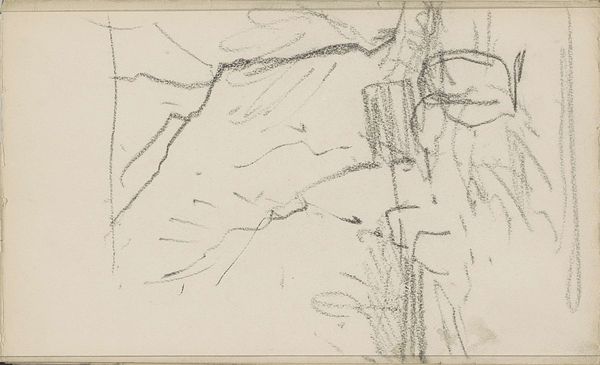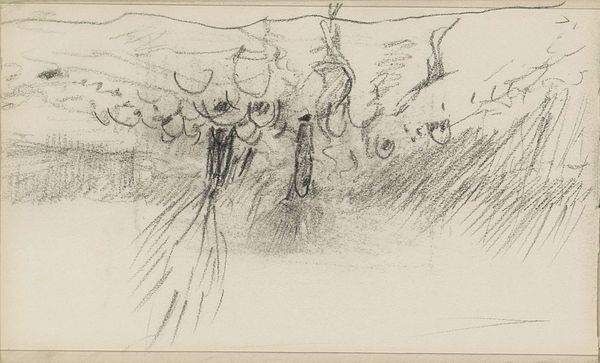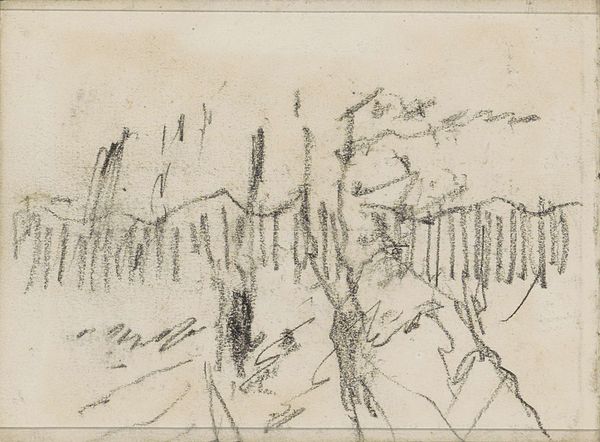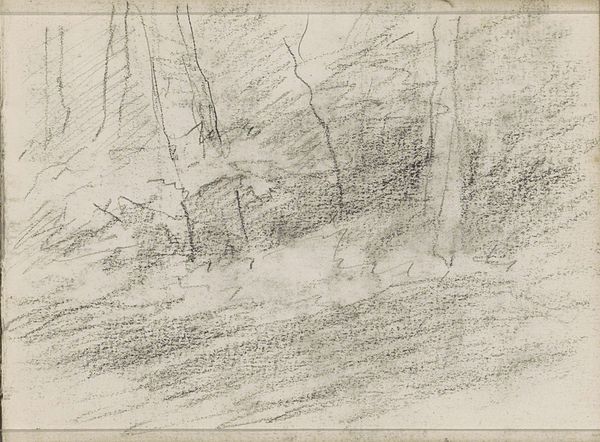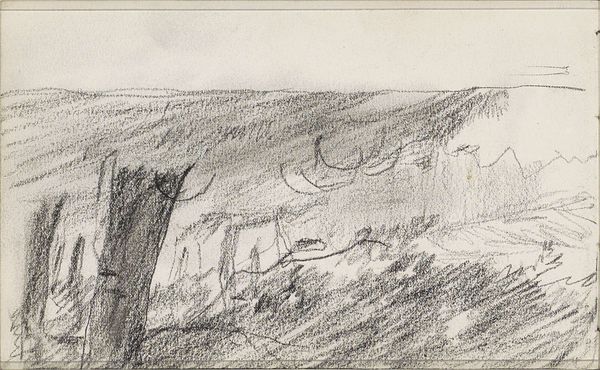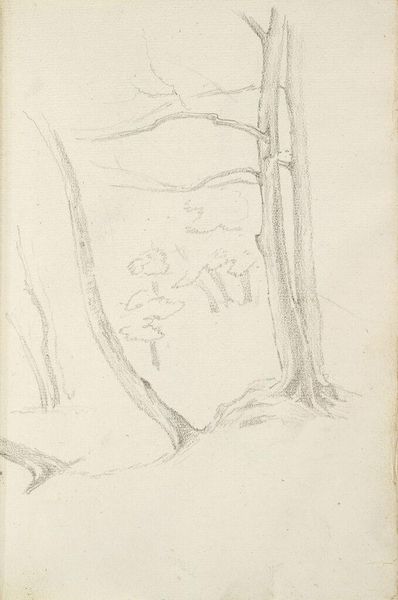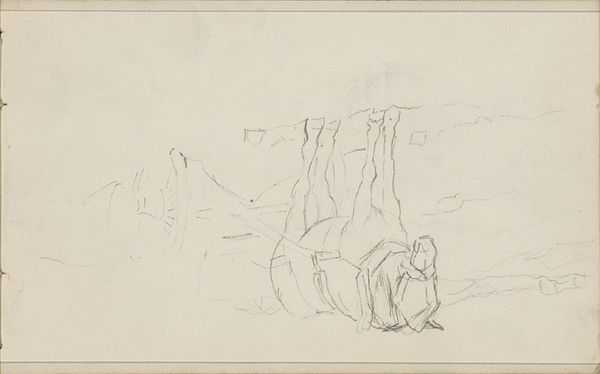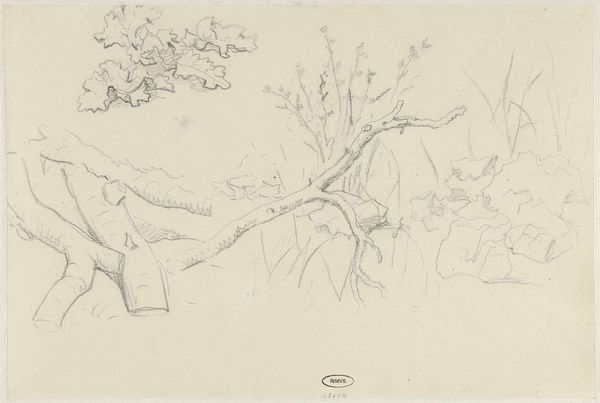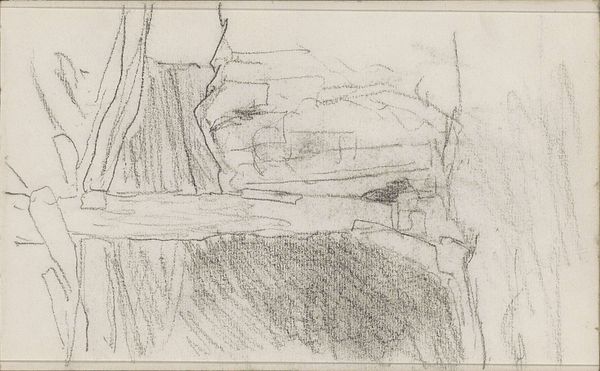
drawing, pencil
#
drawing
#
ink drawing
#
landscape
#
figuration
#
pencil
#
realism
Copyright: Rijks Museum: Open Domain
Editor: Here we have Johan Antonie de Jonge's "Figuren in een landschap," dating from around 1901 to 1927. It's a drawing in pencil and ink, depicting figures in what looks like a landscape. The sketchiness of the work gives it an ephemeral, almost dreamlike quality. What do you see in this piece? Curator: I see a dialogue with the working class, perhaps deliberately obscured. Given the historical period – think about industrialization, burgeoning socialist movements – I wonder about the figures' relationship to the land. Are they agrarian workers, or figures displaced by urban migration? De Jonge doesn't offer easy answers, and that ambiguity is powerful. Consider the absence of detail, which can be interpreted as an intentional erasure of individuality. Who were these people? What were their lives? Editor: That's fascinating. I hadn't considered the socio-political context. The lack of detail initially struck me as simply the nature of a sketch, but I understand your interpretation about identity. Curator: Precisely. The sketchy nature allows De Jonge to hint at these figures without assigning them specific attributes. It is about universality of labor, perhaps, or about precarity. Where do you see any suggestion of the subjects social standing? Can the scene be tied to other artwork of the era and of a similar style? The rough lines could evoke a sense of unease, mirroring the turbulent social climate of the early 20th century. Editor: So, in essence, it's not just a landscape with figures; it's a commentary, though veiled, on the human condition amidst societal changes. Thank you, I definitely have a richer appreciation of the work now! Curator: And I, seeing your fresh perspective, am reminded that art’s meaning is never static but always unfolding.
Comments
No comments
Be the first to comment and join the conversation on the ultimate creative platform.


